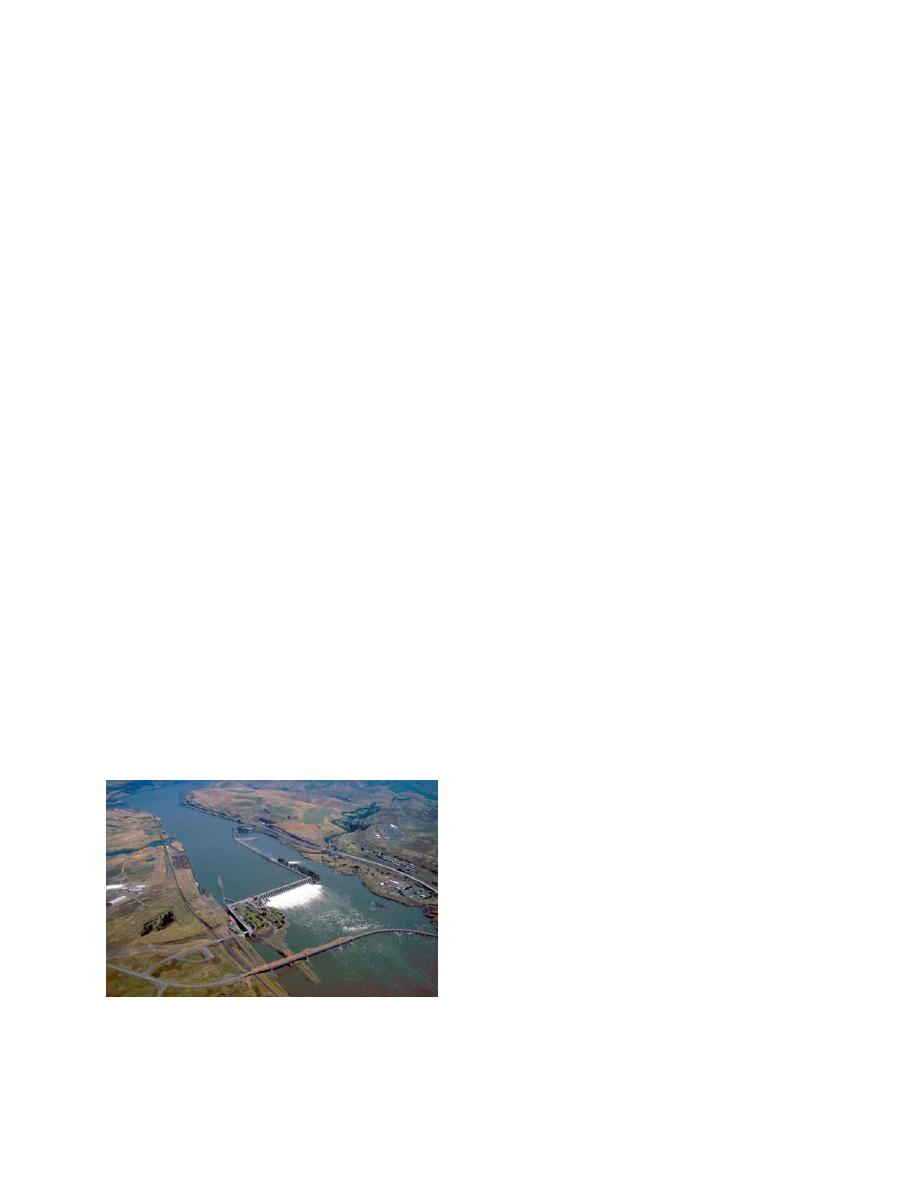
Project: The Dalles 1:25-scale Section Model
PI: Bill Preslan
Project Description/Activities/Capabilities:
1:25-scale section model of the Dalles Dam on the Columbia River. Investigating performance of
deflectors, baffle blocks, stilling basin, endsill, walls, and tailrace for a broad range of discharge per
spillbay.
Sponsor: Portland District. POC - Natalie Richards
CHL Personnel: Bill Preslan, John Ashley, Van Stewart
Project Location and Description:
The Dalles Dam is located 192 miles upstream from the mouth of the Columbia River, two miles east of
the city of The Dalles, Oregon. The dam extends 1.5 miles from the Oregon shore to the navigation lock
on the Washington shore. Because the boundary between the two states follows the old river channel,
The Dalles Dam is almost entirely in the state of Washington. The Dalles project consists of a
powerhouse with 22 hydroturbines with a combined discharge capacity of 2,290,000 cfs, a spillway, and
navigation lock. The spillway at The Dalles is 1150 ft wide with 23 tainter gate-controlled bays. There are
no spillway deflectors at The Dalles Dam. The horizontal apron-type stilling basin at The Dalles is about
190 ft long with an invert elevation of 55 ft. One row of 8-ft-high baffle blocks and a 12-ft-high end sill
provide for energy dissipation in the stilling basin. Training walls, extending over two-thirds the length of
the stilling basin, separate Bays 1 and 2, 2 and 3, and 22 and 23. The tailwater channel downstream of
the stilling basin has a mean elevation of 68 ft with some irregularities, resulting in elevations less than 68
ft. The shallow shelf down-stream of the stilling basin is about 850 ft long downstream of the north end of
the spillway but only half that long at the south end of the stilling basin. The navigation lock is located
north of the spillway with its approach channel well downstream the spillway.
Facilities: Bldg. 7001
Related Topic Areas: Hydraulic structures, environmental studies, salmon survivability, deflectors,
dissolved gas, baffle blocks, endsill, reservoirs, rivers, hydropower



 Previous Page
Previous Page
